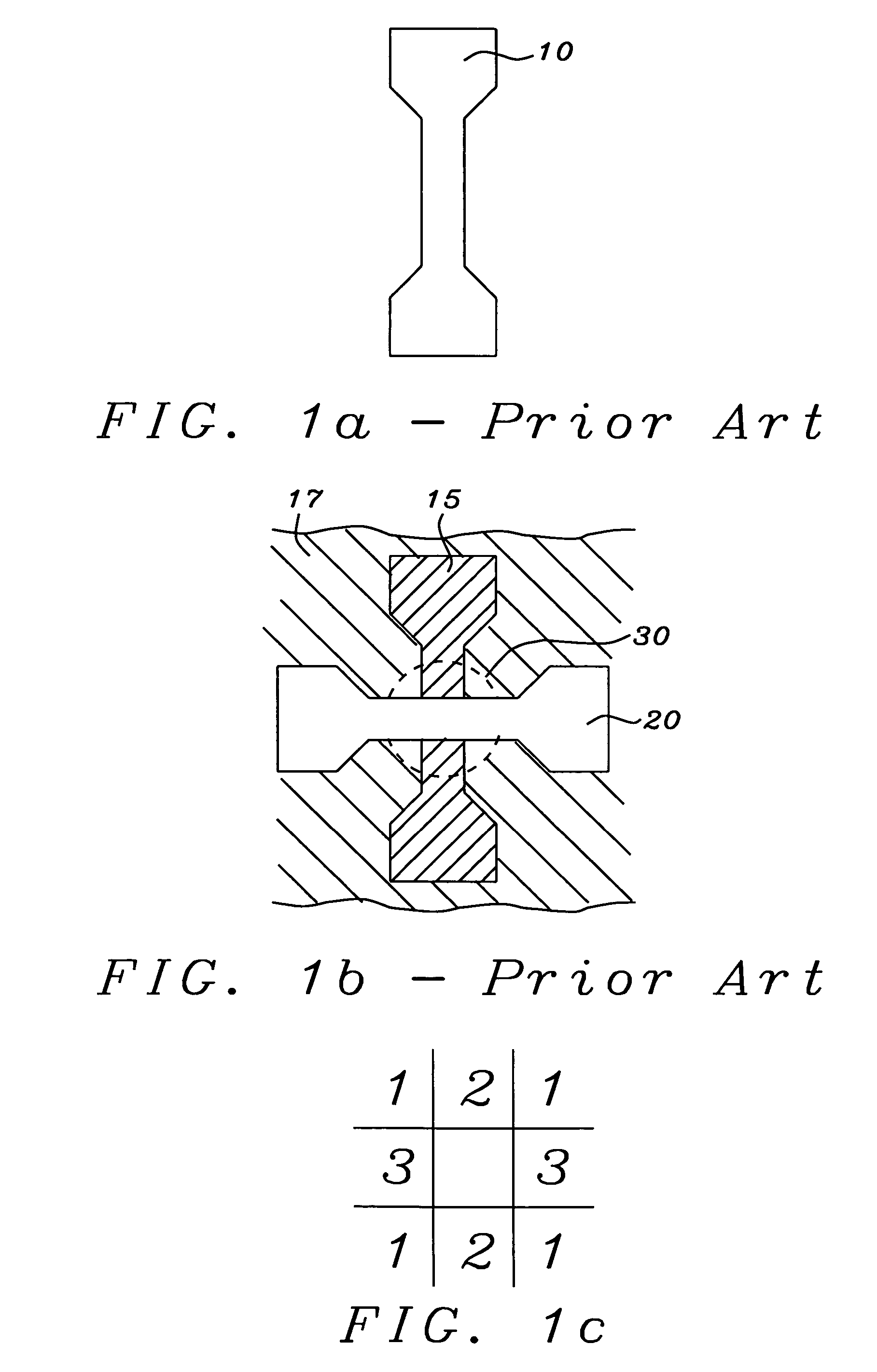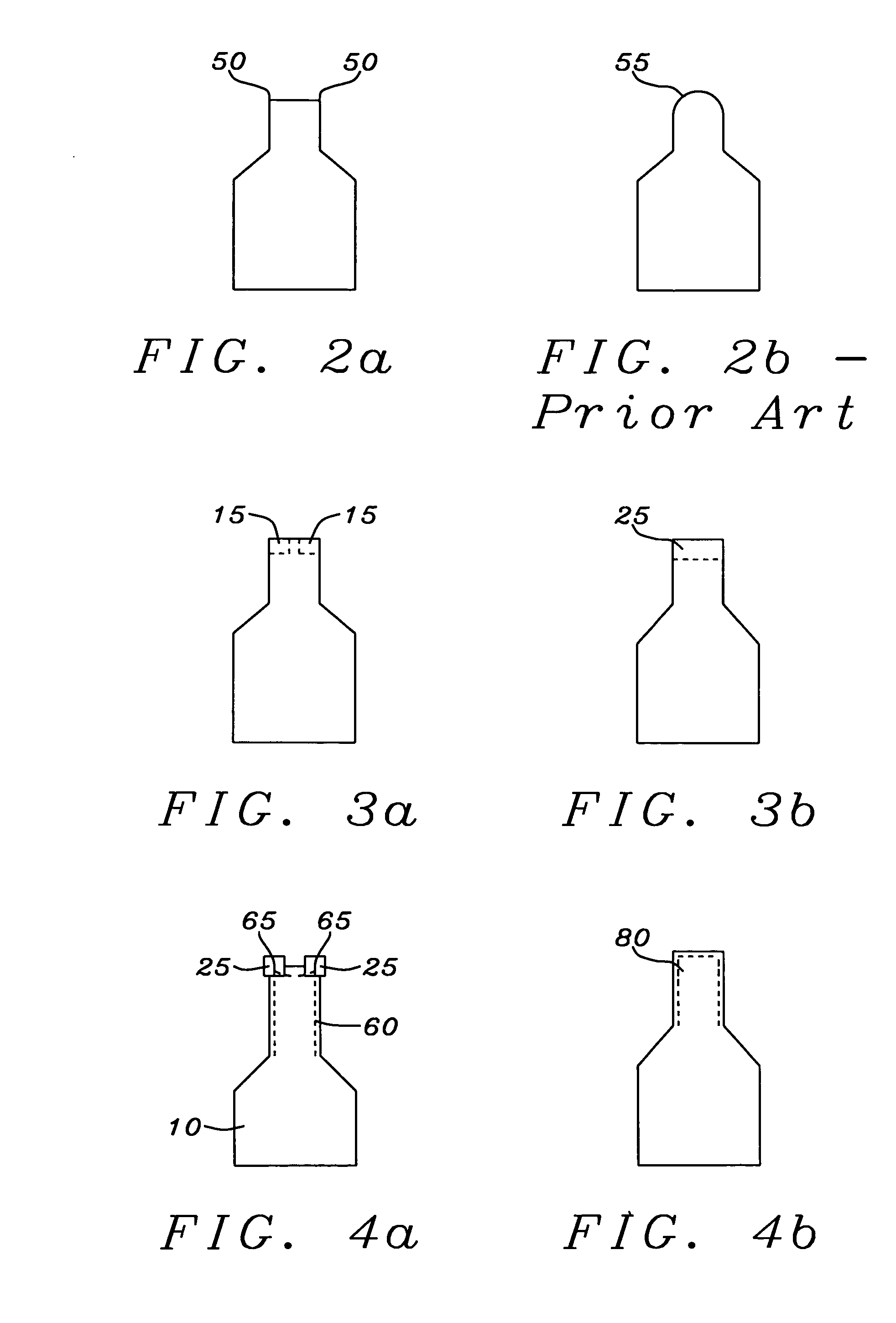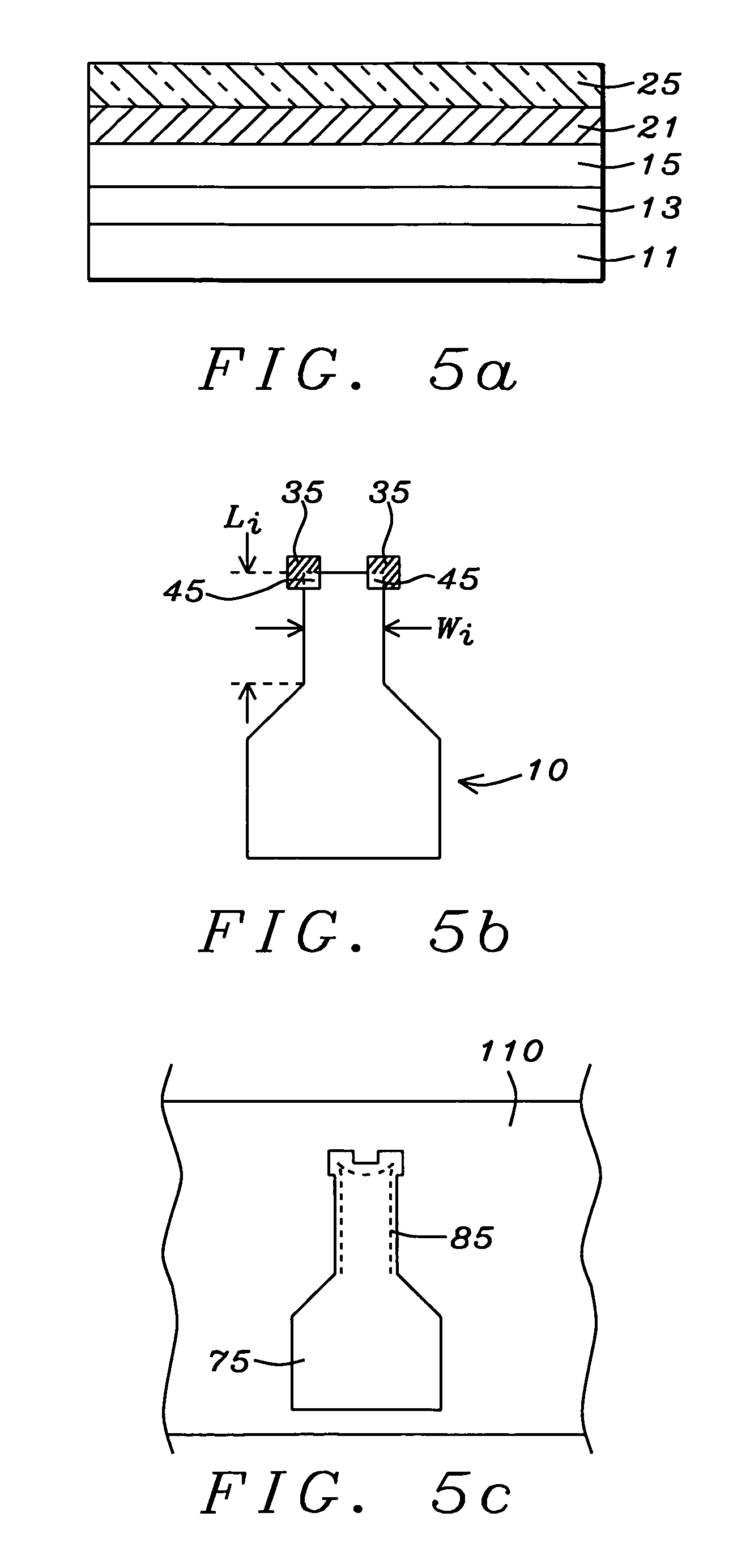Ozone-assisted lithography process with image enhancement for CPP head manufacturing
- Summary
- Abstract
- Description
- Claims
- Application Information
AI Technical Summary
Benefits of technology
Problems solved by technology
Method used
Image
Examples
Embodiment Construction
[0021] The present invention provides a method of forming and using a photolithographic bi-layer lift-off mask of sub-100 nm (less than 0.1 microns) critical dimensions, having sharply defined edges and corner regions. The mask has an upper, stencil portion formed of a photoresistive material, which is commercially available NEB22A2 in this embodiment but which could be an alternative material that is sensitive to other forms of exposing radiation. The mask has a lower, undercut portion, formed of PMGI. The edge and corner regions of the mask are formed and shaped by a process that involves adding auxiliary pattern pieces to the corners, which prevent excessive undercutting of the PMGI during a first development process, then removing those auxiliary pieces and completing the formation of the stencil and PMGI layers using a process of ozone oxidation. The auxiliary pattern pieces are added by differentially exposing regions of the photoresist, so that the desired auxiliary pieces ar...
PUM
 Login to View More
Login to View More Abstract
Description
Claims
Application Information
 Login to View More
Login to View More - R&D
- Intellectual Property
- Life Sciences
- Materials
- Tech Scout
- Unparalleled Data Quality
- Higher Quality Content
- 60% Fewer Hallucinations
Browse by: Latest US Patents, China's latest patents, Technical Efficacy Thesaurus, Application Domain, Technology Topic, Popular Technical Reports.
© 2025 PatSnap. All rights reserved.Legal|Privacy policy|Modern Slavery Act Transparency Statement|Sitemap|About US| Contact US: help@patsnap.com



